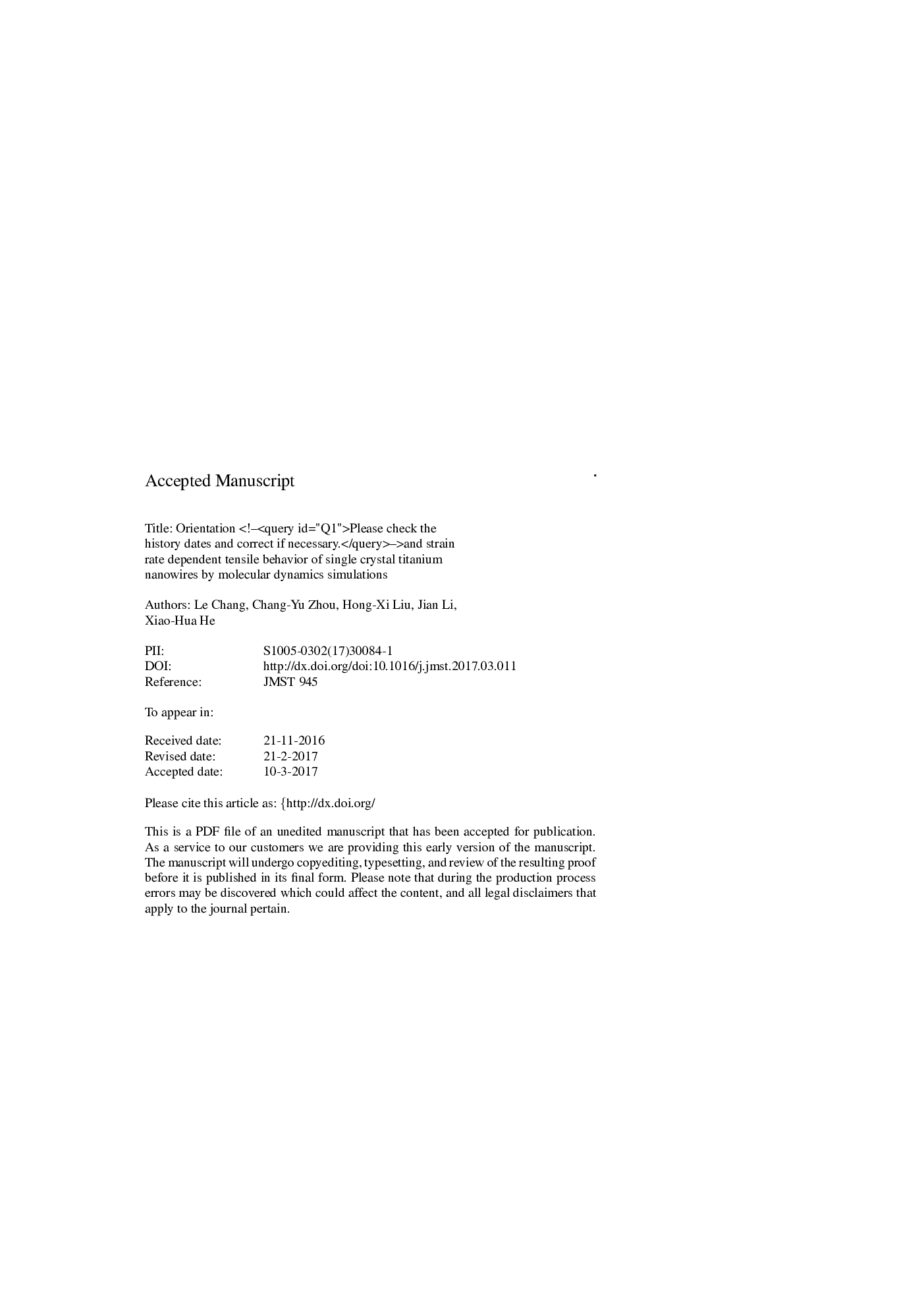| Article ID | Journal | Published Year | Pages | File Type |
|---|---|---|---|---|
| 7952002 | Journal of Materials Science & Technology | 2018 | 19 Pages |
Abstract
Molecular dynamics simulation was employed to study the tensile behavior of single crystal titanium nanowires (NWs) with [112¯0], [1¯100] and [0001] orientations at different strain rates from 108 sâ1 to 1011 sâ1. When strain rates are above 1010 sâ1, the state transformation from HCP structure to amorphous state leads to super plasticity of Ti NWs, which is similar to FCC NWs. When strain rates are below 1010 sâ1, deformation mechanisms of Ti NWs show strong dependence on orientation. For [112¯0] orientated NW, {101¯1} compression twins (CTs) and the frequently activated transformation between CTs and deformation faults lead to higher plasticity than the other two orientated NWs. Besides, tensile deformation process along [112¯0] orientation is insensitive to strain rate. For [1¯100] orientated NW, prismatic slip is the main deformation mode at 108 sâ1. As the strain rate increases, more types of dislocations are activated during plastic deformation process. For [0001] orientated NW, {101¯2} extension twinning is the main deformation mechanism, inducing the yield stress of [0001] orientated NW, which has the highest strain rate sensitivity. The number of initial nucleated twins increases while the saturation twin volume fraction decreases nonlinearly with increasing strain rate.
Related Topics
Physical Sciences and Engineering
Materials Science
Materials Chemistry
Authors
Le Chang, Chang-Yu Zhou, Hong-Xi Liu, Jian Li, Xiao-Hua He,
